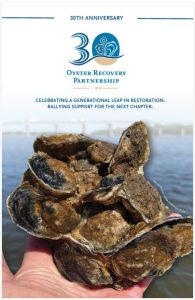2023
ORP and restoration partners celebrate a record-breaking restoration year with over 1.5 billion juvenile oysters planted in Chesapeake Bay waterways! Read Governor Moore's press release.
ORP is appointed to Governor Moore's Shell and Substrate Task Force, the purpose of which is to identify alternate sources and strategies for oyster shells and substrates to promote oyster production in Maryland.
2022
Initial restoration in the St. Mary’s River Oyster Sanctuary is completed, with a total of 60.2 acres of reef restored.
ORP and restoration partners celebrate planting the 10 billionth oyster in Chesapeake Bay waterways!
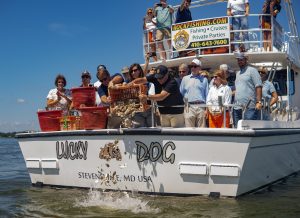
2021
Initial restoration in the Tred Avon River Oyster Sanctuary is completed in Maryland, with a total of 130 acres of reef restored.
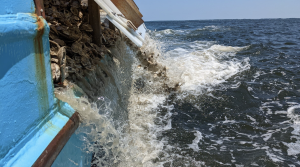
Large-scale restoration efforts began in the St. Mary's and Manokin Rivers.
2020
Initial restoration in the Little Choptank River is completed in Maryland, with a total of 357.8 acres of reef restored.
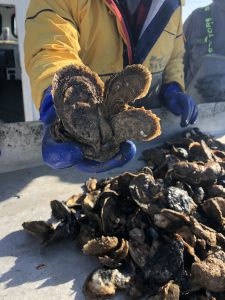
2019
The Manokin River is selected as the 10th and final tributary for large scale restoration in the Chesapeake Bay (5th in Maryland).
ORP's Shell Recycling Alliance reaches the significant milestone of 200,000 bushels of shell recycled, and has a record breaking year with more than 36,000 bushels collected. Approximately 300 restaurants participate from Maryland, the District of Clumbia, Virginia, and Pittsburgh, PA.
2018
St. Mary's River is approved for large scale restoration. ORP and resotration partners begin restoration blueprint.
2016
The Chesapeake Bay Program approves several oyster aquaculture approaches for use as best management practices to reduce excess nitrogen and phosphorus in the Bay. Read the Fact Sheet
ORP's Shell Recycling Alliance reaches the significant milestone of 100,000 bushels of shell collected to be reused in Chesapeake Bay oyster restoration efforts.

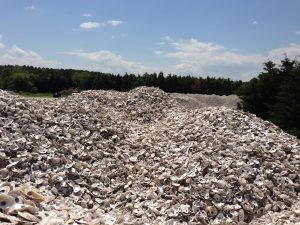
2015
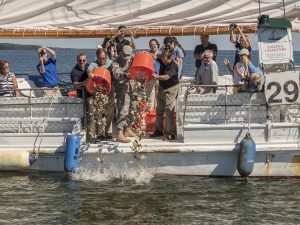
Credit: Chesapeake Bay Journal
348 acres of oyster habitat in Harris Creek are restored to population levels last seen 50 to 100 years ago. It is declared the largest oyster sanctuary project in the world.
Restoration efforts begin in the Tred Avon River.
2014
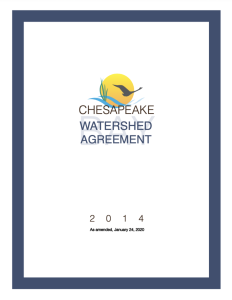
The Chesapeake Bay Watershed Agreement is signed as part of a regional compact to restore native oyster habitat and populations in 10 tributaries by 2025. Restoration begins in Maryland’s Little Choptank River.
2011
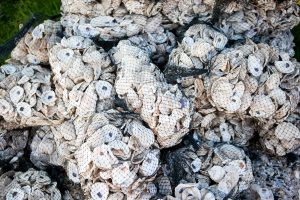
Programs begin to train watermen and oyster farmers how to produce oysters and operate an aquaculture business.
Large-scale oyster restoration efforts begin in Harris Creek, a tributary of the Choptank River complex on Maryland’s Eastern Shore.
2010
The Maryland Oyster Advisory Commission advises the state on strategies related to rebuilding and managing the oyster population in Maryland’s portion of the Chesapeake Bay. The Maryland General Assembly passes laws to revamp the wild oyster fishery and shellfish aquaculture.

ORP launches the Shell Recycling Alliance, a network of restaurants and seafood suppliers that save their used oyster shell to use in restoration efforts.
Harris Creek is established as an oyster sanctuary.
2009
The President signs Executive Order 13508, Chesapeake Bay Protection and Restoration, that recommends large-scale oyster restoration in Maryland and Virginia. Findings from the bi-state and federal government's environmental impact study is released, outlining ways to enhance the Bay's oyster population.
Changes to Maryland shellfish management facilitate expansion of oyster aquaculture in Chesapeake Bay.
2008
Maryland Department of Natural Resources launches the Marylanders Grow Oysters program to raise awareness about the importance of oysters to the Bay’s ecosystem. It provides citizens a no-cost opportunity to grow oysters and make a tangible difference in the health of their waterways.
2003
The annual oyster harvest is 26,000 bushels, the lowest on record.
1993
The Oyster Roundtable is convened to address concerns about the native oyster population in Maryland. The result is the Maryland Oyster Roundtable Action Plan released December 1993 – and ORP’s founding in 1994. View the action plan.
1950 - 60s
The native oyster population is ravaged by two deadly diseases MSX (Haplosporidium nelsoni) and Dermo (Perkinsus marinus).
1916
Natural resource organizations initiate efforts to manage the Bay's oyster fishery.
Early 1900s
The economic engine supported by the oyster craze comes at a cost. Workboats deplete the hard bottom of Bay tributaries. Harvests begin to decline. Runoff pours into the Bay as the Industrial Age begins.
Late 1800s
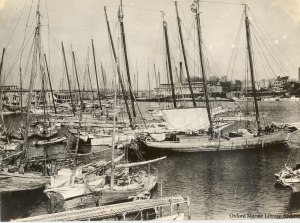
Oyster production peaks. Soon hundreds of skipjacks are working the Bay, contributing to an annual harvest of 14 to 20 million bushels in Maryland. Disputes about the ownership of the oysters leads to the bloody Oyster Wars.
1830
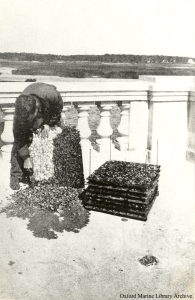
First oyster lease law passed, making Maryland one of the first states to support oyster aquaculture.
1800s
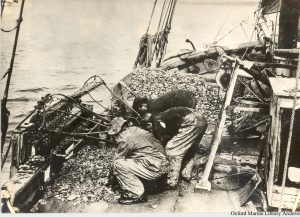
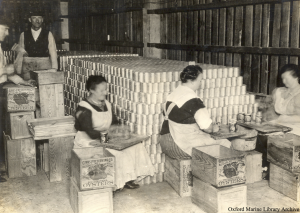
There are 450,000 acres of oyster reefs in the Bay, and communities rely on oyster harvests for their livelihood. With more than 100 oyster-packing houses and a booming railroad business, Baltimore becomes the hub of the American canning industry and oysters are shipped nationwide.
1600s
Captain John Smith describes oysters on the ground “as thick as stones.” Abundant, easy to harvest, inexpensive and nutritious, they are a dietary staple for colonists. The shells are prized for fertilizer, roads, and brick mortar.

